Nosediving
Nosediving
1.0 Some Preliminary Stuff
Nosediving affects most model yacht classes. While spectators like to OOH and AHH watching boats behave like hungry ducks, a good nosedive is usually death to any hopes of winning a race. Nosediving in IOMs is of most concern with A rigs though it can happen with B rigs: it rarely happens with C rigs. This article explores the phenomenon of nosediving and then looks at ways of combatting it.
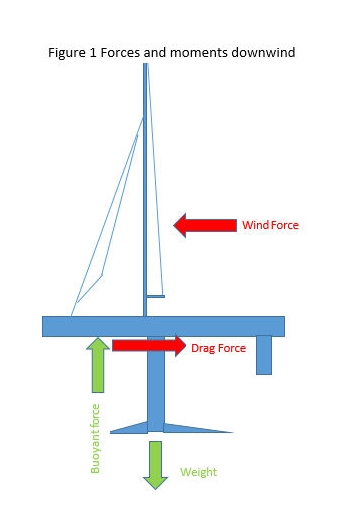
Figure 1 shows the forces on a boat running downwind. The wind force acts near the centre of area of the sails (usually around a third of the way up the mast) while the water drag acts near the bottom of the hull or even a bit lower depending on the keel and bulb configuration. These two forces are in opposite directions and produce a moment that tries to push the bow down. This moment is resisted by an opposite one generated by the weight of the boat and the buoyancy force.
The harder the wind blows the higher the pitching moment and the further the bow goes down. Figure 2 shows the calculated nose down pitch vs the pitching moment for a number of generic IOM designs. It will be seen that at about 5 degrees pitch the curves steepen: this pitch angle is also around the highest pitch angle where the forward sections of the hull are likely to be able to generate hydrodynamic lift, i.e. lift generated by the speed of the boat and not just by displacement. In the following this is called the “tipping point”.
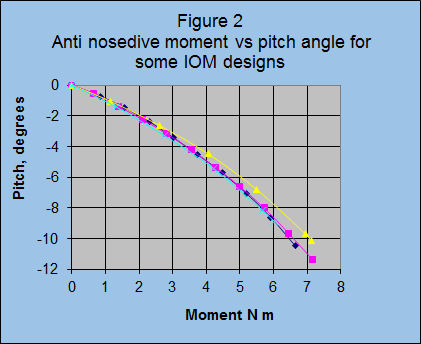
The end points of the curves are where the nose goes under: once this happens the deck tends to force the bow down further to a full blown nose dive, even with the heavily cambered decks in current designs. In the following this is called the “dive point”. The pitch angle at this point is typically around 10 or 11 degrees.
For the generic designs used for this study, the centre of gravity is about 520 to 530 from the bow, and when the boat is sitting normally this is also the centre of buoyancy. At the “tipping point” the centre of buoyancy moved forward to about 400 to 420 mm from the bow and at the dive point, the centre of buoyancy moved forward to about 300 to 320.
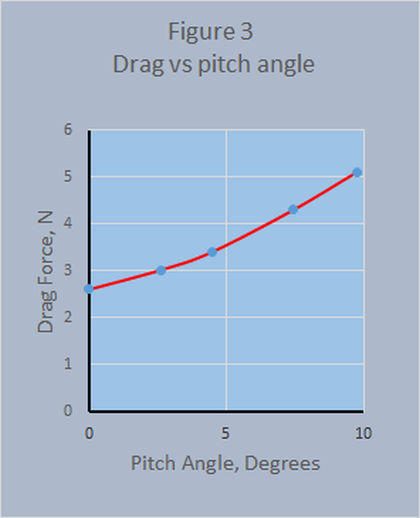 As the bow depresses the underwater shape changes: notably, the waterline length decreases, and the drag increases above that for a boat on its normal waterline. In addition, at about the tipping point the drag from the bulb begins to increase rapidly. Figure 3 shows the change in drag with pitch at 2.7knots. It can be seen that there is a considerable increase. Indeed the drag on a boat about to nose dive is about twice that of a boat on its correct waterline. It should also be noted that the rate of increase of drag with pitch angle increases after the “tipping point”.
As the bow depresses the underwater shape changes: notably, the waterline length decreases, and the drag increases above that for a boat on its normal waterline. In addition, at about the tipping point the drag from the bulb begins to increase rapidly. Figure 3 shows the change in drag with pitch at 2.7knots. It can be seen that there is a considerable increase. Indeed the drag on a boat about to nose dive is about twice that of a boat on its correct waterline. It should also be noted that the rate of increase of drag with pitch angle increases after the “tipping point”.
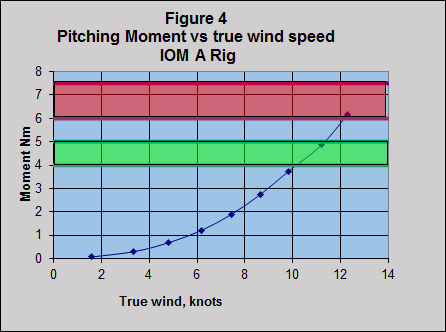
Figure 4 shows the results of an approximate calculation of the pitch angle versus wind speed for an IOM with an A rig. It must be noted that THE WIND SPEEDS GIVEN IN THIS ARTICLE ARE AT MODEL YACHT LEVEL AND ARE LESS THAN THOSE MEASURED ON THE BANK. The green zone shows the typical range of moment to reach the “tipping angle” while the red zone shows the corresponding range for a full nosedive. It will be seen that the tipping point is reached at around 10 to 11 knots and complete nosedive about 1 or 2 knots higher. This is, of course in steady conditions where the wind speed builds up very slowly and the water is flat: in gusty conditions the boat speed does not accelerate as fast as the wind speed so the apparent wind will be higher and nosediving may occur at lower wind speeds. The experience described in “Wind and Water/Wind Speed and Gradient Observations at Lake Julienne (Jan 2014)” showed an IOM became uncomfortable once the wind reached the 11 knot range and this is in reasonable agreement with Figure 4.
At the tipping point the boat speed is estimated to be about 3 knots and just before the bow goes in the speed is a little higher. This is about the full story for an A rig while the boat stays in displacement mode. Once past the tipping point if the boat experiences a sudden gust or runs into the back of a wave or wake, down it goes!
To reach high speeds running the boat has to start planing, that is the hydrodynamic pressure due to the boat speed has to provide a significant portion of the support of the boat, and a good feature of this kind of support is that it occurs well forward, offsetting the pitching moment from the sails. This form of support begins to develop at three knots or a bit less and the analyses show that this corresponds roughly to the “tipping point”. Planing is thus unlikely in dead flat water (mind you the water is unlikely to be flat at 10+ knots). In real conditions it seems that surfing down a wave to help accelerate the boat is the most likely way to get past the limitations of displacement sailing.
2.0 What can the designer do about this?
• Keep the centre of mass aft. If taken to excess this produces other problems.
• Provide the boat with as much buoyancy as possible below a line from the waterline at midships to about 40mm up the bow from the waterline. Putting buoyancy in this region increases the pitching moment to reach the “tipping point”, giving more chance of getting on the plane.
• Design the forward sections to provide a good planing surface starting no more than about 200mm from the bow. This is to promote early hydrodynamic lift.
• The conventional wisdom is to provide more buoyancy above this line, especially towards the bow, to make it harder to force the bow under.
• There is another line of thought that the buoyancy above the line described above should be reduced and the deck beam kept at zero back to the forward end of the jib. The idea is to make the nosedive less violent and allow a faster recovery. At this time this view is in the minority, but trials are being done with at least some success.
Unfortunately almost everything that combats nosediving is also bad for wave impact resistance going to windward, but then compromise was ever part of boat design!
3.0 What can the boat skipper do?
• In gusts, sail by the lee to blanket the headsail (I confess I find this almost impossible to do, but I have seen better skippers do it successfully).
• Theoretically one could haul in the sheets but mostly this results in a broach.
• Arrange for the leech of the mainsail to be eased off downwind (tentative suggestion but we are working on how to do it.)
• Luff sharply to lift the bow.
• Use the waves. This is so important it is discussed in the next section.
4.0 Waves
This is best started by considering the water movement in a wave. I thought of putting in diagrams of all this but really, all we need to know is that on the face of the wave (that is the side facing the way the wave is travelling) the water is rising and going the right way for downwind assistance. The face of a wave is therefore good for our boat going downwind.
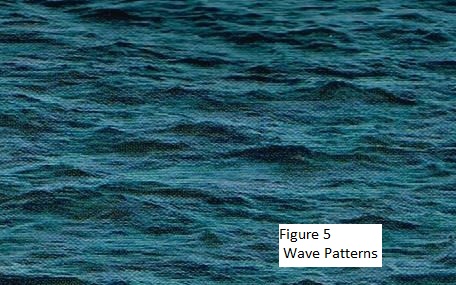
The converse is true of the back of a wave. Here the water is falling and going the wrong way as well: this is bad for our boat going downwind. The idea is thus to spend as much time on the face of the waves and avoid the backs of high waves.
Fortunately real waves in the places model yachts sail do not extend sideways all that far, unlike the continuous ocean swells at sea. Figure 5 shows a set of waves of the type common in estuaries and rivers. It can be seen that the waves are not only of varying crest lengths but also height, and because of this it is possible to weave a course down through the waves, picking high wave faces and targeting small backs. We used to do this in dinghies (just like all dinghy sailors) and had a ball doing it.
The video (courtesy of local club member Nick Creech) shows an IOM sailing downwind and overtaking the waves. At first the boat is checked by the backs of waves (seconds 7 and 12 into the video) and then quite badly at 22 seconds as it runs into a bigger wave. Just after that the boat catches a good size wave that accelerates it to full planning speed and thereafter it just blasts downwind. It is clearly worth deviating from the strict downwind course to make maximum use of the acceleration that surfing can give.
If the waves are overtaking the boat, things are a little easier but the aim of spending as much time surfing as possible is still valid.
Col Thorne July 2014
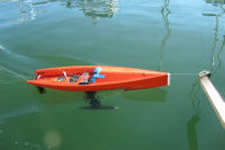
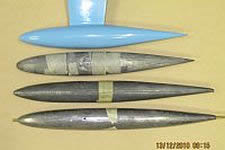
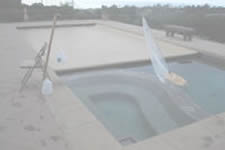
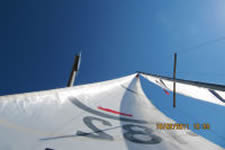
 Behaviour
Behaviour